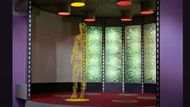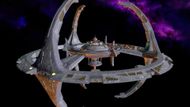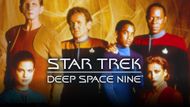Among sci-fi shows, Star Trek was unique because it was audacious, intelligent, and progressive. Captain Janeway (the female captain) was one of the series' strong female protagonists, opening the door for women to play significant roles in space exploration. It inspired real-life creators and entrepreneurs by establishing one of the first fan communities. This sci-fi show addressed themes and long story arcs that older sci-fi shows rarely explored. It treated these issues with the depth they deserved and predicted real technologies that we use today.
The show painted a bright future for humanity based on peace and progress. It addressed racism, violence, religion, and moral quandaries through alien stories. Most importantly, Star Trek celebrated racial and cultural diversity long before it became common on TV. Each of these reasons made Star Trek a leader in the sci-fi genre.
Disclaimer: This article is based solely on the writer's opinion. Reader discretion is advised.
Here are 7 reasons why Star Trek is way ahead of its time in the sci-fi genre:
7. Breaking gender norms and leadership

Captain Kathryn Janeway, introduced in Star Trek: Voyager (1995), became one of the first female commanding officers in a major sci-fi show. She made tough decisions and took bold actions while showing great care for her crew. Janeway never allowed difficult decisions to weaken her resolve. She struck a balance between compassion and power. Kathryn guided Voyager through uncharted space, battling the Borg and other unknown threats while keeping her crew safe.
Her leadership style stood out among the male captains on TV at that time. Janeway proved that a woman could effectively pilot starships and tackle moral dilemmas with kindness. This paved the way for future sci-fi shows to feature strong female leads in leadership roles. Star Trek was way ahead of its time in this regard.
6. Shaping fandom and inspiring future innovators

Star Trek fandom evolved into the contemporary concept of fan communities in the 1960s. Fans created fanzines, met at conventions as early as 1969, and even saved the show by launching their own letter-writing campaigns. They wrote stories, created art and songs, and shared ideas long before the internet became popular. This foreshadowed later participatory online fandoms.
Fans have a strong bond with both the show and one another. Many scientists, engineers, and creators credit Star Trek as their inspiration for choosing their careers. This model of fan culture is now typical for many sci-fi shows and franchises. Thus, it proved that Star Trek was way ahead of its time in the sci-fi genre.
5. Expanding the idea of science fiction for adults with continuing story arcs

Star Trek: The Original Series (1996) did not just tell stand-alone stories. This sci-fi show also included recurring characters and moral quandaries. It sparked thoughts in adult viewers about society, morals, and identity. This was built upon in later series, particularly Voyager, where story arcs became increasingly complex. The adventure of Janeway and her crew as they sought a way home and managed relationships with allies in foreign regions resulted in stories that changed across the episodes. This approach differed from older sci-fi, which often reset with each episode.
Star Trek provided viewers with emotional journeys that had real consequences and growth. And following its lead, many sci-fi shows developed into more complicated adult dramas.
4. Predicting real-world technologies

Star Trek envisioned many futuristic tools long before they became real. The show featured devices like communicators, which resemble early folding phones. It included replicators that provided food and materials on demand, similar to 3D printers. The series also featured touch panels, flat-screen displays, and universal translators. Later, innovators and engineers stated that Star Trek inspired them and strove to make their ideas a reality.
The technology from Star Trek echoes in the real designs of tablets, smartphones, and medical scanners, thus pioneering and influencing a lot of modern technology.
3. Smart social commentary disguised as aliens and adventure

Star Trek used aliens and strange worlds to tackle real human issues. It told stories of war, racism, sexism, class struggles, and politics through alien species like the Klingons, Borg, and Ferengi. These aliens mirrored our reality. For instance, the Borg dealt with issues of conformity and loss of identity, the Ferengi represented greed and sexism, and the Klingons explored themes of honor and conflict.
The episodes raised awareness about prejudice, colonialism, propaganda, and religion without directly mentioning societies on Earth. For instance, religious politics and the appropriate and inappropriate use of faith were major themes in Star Trek: Deep Space Nine (1993). During the Cold War and the Civil Rights Movement, Star Trek boldly shared moral lessons through space adventures.
This method enables the authors to tell a story of science fiction while critiquing actual socioeconomic and cultural issues. Star Trek tackled ethical dilemmas and encouraged viewers to consider right and wrong long before many other shows, making it a pioneer in the sci-fi genre.
2. A bold, optimistic vision of humanity's future

From its earliest series, Star Trek offered a hopeful vision of humanity’s future. It depicted a world free of poverty, war, and hunger. Many races and planets worked towards friendly relationships and discovery. The United Federation of Planets acted like an optimistic United Nations, valuing knowledge over conquest. The future appeared bright and promising in the sci-fi show because it showed that we can learn from the past and better ourselves. The show emphasized logical and moral progress as key to societal growth.
In an era of dystopian fiction and internet pessimism, this sci-fi show dared to inspire optimism. The show encouraged us to believe that humanity could evolve and improve. This hopeful message distinguishes Star Trek from most sci-fi shows. The show inspired viewers to envision a future where we unite in peace. It was far ahead of its time in the sci-fi genre.
1. Pioneering racial and cultural diversity

In the 1960s, when most shows only had white actors, Star Trek: The Original Series had a diverse cast. The bridge included Black officer Uhura, Asian officer Sulu, and Russian officer Chekov. It showed them working together on equal terms. One of the first interracial kisses on U.S. television took place on this show. Many different people and planets were also represented among the crew. Later series continued this tradition with new races, genders, and orientations. The diversity was genuine and not just for show.
The stories often portrayed crew members as characters who had their own moral and cultural insights. This variety invited diversity, even when other shows hesitated to go that far. This sci-fi show offered viewers a vision of unity and respect among different cultures. Many later sci-fi shows followed its lead and adopted inclusive casts and worlds.
Star Trek broke many barriers that other sci-fi shows had not yet dared to cross. It made television a place for learning, dreaming, and asking questions about the world, pushing it beyond simple amusement. It brought together science, ethics, hope, and diversity at a time when very few shows did this. Its stories impacted viewers and inspired generations of future creators.
This sci-fi show helped shape technology, encouraging fans to become scientists and teaching audiences to envision a better world based on its visions. Its ideas remained fresh and meaningful decades later. Star Trek was a movement ahead of its time, not just a sci-fi TV show.
